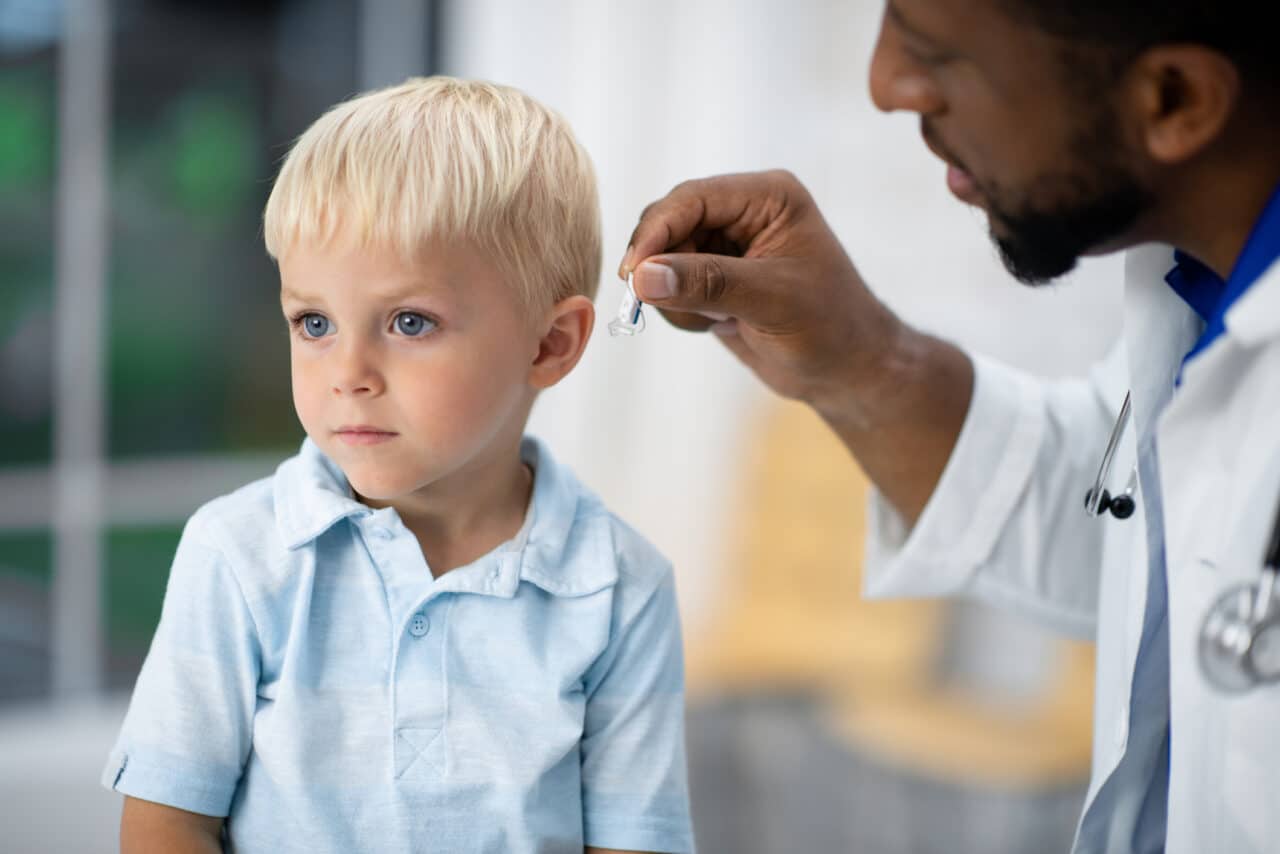As a parent, nothing is more important than your child’s health. In honor of October being Audiology Awareness Month, we’d like to go over the basics of pediatric hearing loss, from how it’s diagnosed to the best treatment options available.
Most Infants Are Screened for Hearing Loss Shortly After Birth

The vast majority of newborns are screened for hearing loss before they leave the hospital or in the first few weeks after birth. These tests are quick, non-invasive, and can help with the early identification of any congenital hearing difficulties.
While these tests are accurate, any hearing loss that might be detected could be due to a temporary issue such as fluid buildup in the ear. If any irregularities are found, your doctor will likely schedule a follow-up hearing test to help determine if any permanent issues exist.
Many Factors Can Contribute to Pediatric Hearing Loss
Genetics is the most common cause of pediatric hearing loss. However, many other factors may be the cause as well, including:
- Infections during pregnancy, such as cytomegalovirus
- Premature birth or low birth weight
- Certain medications
- Head injury
- Exposure to loud noise
- Meningitis
- Encephalitis
Untreated Hearing Loss Can Slow Language Development
Hearing plays a crucial role in developing speech and language skills. Children with untreated hearing loss often experience delays in these skills, such as being slower to speak their first word or to learn how to read.
Not only can these delays affect their academic performance once they start school, but it can also make it more difficult for them to communicate and build friendships with other children.
Behind-The-Ear Hearing Aids Are the Preferred Model for Children
Diagnosing and treating pediatric hearing loss early is the best way to prevent any developmental delays. While different treatments are available based on the cause and severity of your child’s hearing loss, pediatric hearing aids are a common recommendation.
For infants and young children, the behind-the-ear (BTE) hearing aid style is recommended by groups like the American Speech-Language-Hearing Association (ASHA) because the earmolds are soft, safe, not easily broken and easy to replace as your child grows.
Bottom Line
Hearing loss is a relatively common condition in children. In some cases, it may be temporary, while in others, it is permanent. Symptoms may be present at birth or develop as your child ages.
If you notice that your child doesn’t startle at loud noises or doesn’t seem to hear well when out playing at Robinswood Community Park, schedule an appointment for a hearing test as soon as possible to assess if any hearing loss exists and start treatment early.
For more information or to schedule an appointment with one of our pediatric specialists, call Evergreen Speech and Hearing Clinic today.